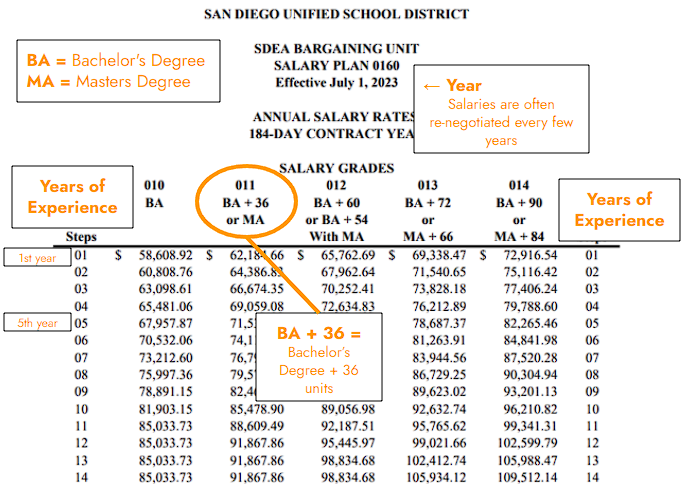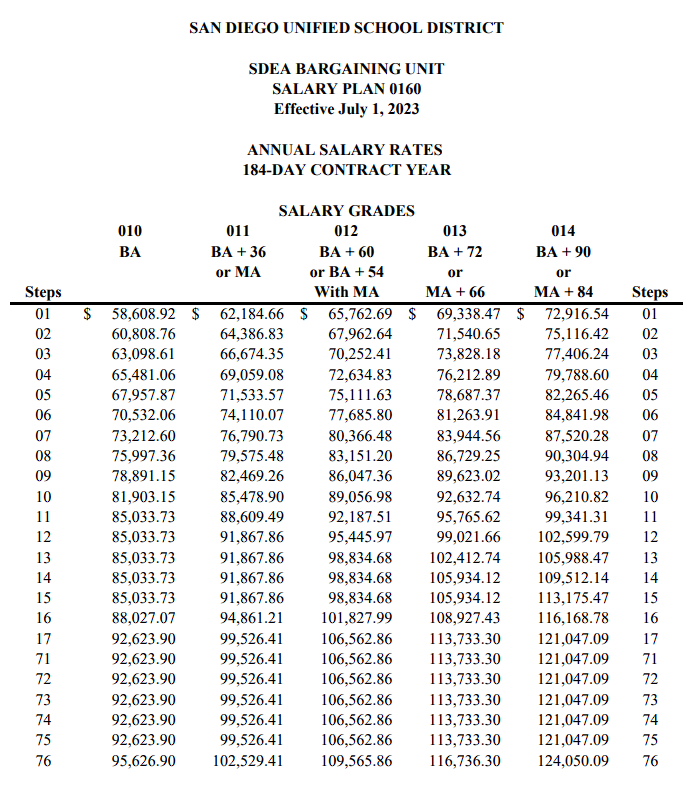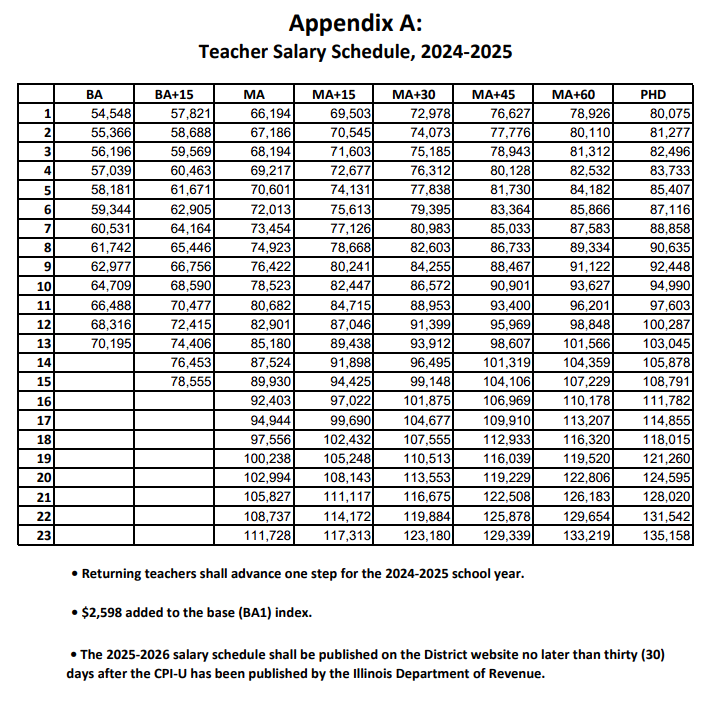District Administrators: For credit information on our courses, please see our University Credits, Units, and Transcripts page.
“Alright everyone- tomorrow we have WASC coming to our campus. You all know what that means. For the next 30 min I want you to meet with your PLCs and ensure everyone has received their students’ IEPs and 504s. Collaborate with SPED on that as needed. Also, discuss your NGSS and SEL implementation plan with your department and be sure you all are horizontally and vertically aligned with one another. Before you leave today, check out our professional learning opportunities for the year in the staff bulletin. If you want to earn units for them, you’ll have to pay for them yourself. The enrollment deadline is today and each unit costs $500. Good luck!”
New Teachers:
Although every veteran teacher can easily pick up that the above paragraph is a parody of the types of things we hear from admin (and of the overuse of acronyms in education), it takes me right back to how I felt during my first year of teaching. LOST. I sighed inwardly every time I heard someone say “you all know what that means” because it meant I’d have to ask someone for clarification or risk not fulfilling a job duty, and I know I am not the only one that experienced this.
It can be easy for us to forget the kinds of things that new teachers might not know or understand yet, and the salary schedule and advancing on it is one of them. Although it might seem obvious at first glance that you raise your salary every year you work and for engaging in professional development, no one actually explains it to you. So, let’s do it!
What is a teacher salary schedule?
A salary schedule is a structured salary determination system that school districts use based on factors like years of experience, education level, and additional professional development. They typically consist of a grid or chart that illustrates a sequence of salary levels or “steps” which increase at pre-determined intervals. Below are two examples.
Do all school districts have a salary schedule?
School districts often do many things differently and independently of one another. However, as of 2019 61% of U.S. school districts pay teachers according to a “salary schedule” (National Council on Teacher Quality, 2019).
Public schools are more likely to use a salary schedule than private or charter schools. To determine whether your school district has one, it is best to consult your district website. Some search terms I recommend are:
- NAME OF DISTRICT salary schedule
- NAME OF DISTRICT bargaining agreement
- NAME OF DISTRICT Human Resources
Once you find the correct webpage, you may find it difficult to determine which salary schedule is for teachers. This is because the teachers are only one of many district employee groups.
In general you want to look for the link that has words like “teacher”, “credentialed”, “licensed”, “certificated” and avoid words like “classified”, “administrator”, etc. The next best place to look for your district’s salary information is on their Human Resources page.
Example:

My school district definitely has a salary schedule. How do I read it?

Steps: Each row in the grid represents a “step” which translates into a specific number of years of teaching experience. For some districts each step is 1 year of experience, for other districts each step may represent several years of experience.
Lanes: Each column in the grid represents a “lane” which translates to different education levels. The most common education levels included here are Bachelor’s degrees (B.A.), Master’s degrees (M.S.), Doctorates (PhD), and additional units earned from graduate level coursework and/or additional professional development or specialized training.
Placement: When teachers are hired by a school district, they are placed onto the salary schedule depending on their years of experience and education level. For example, a teacher with 2 years of experience and a Bachelor’s degree may be placed at Step 2, Lane 1, and earn $X. Whereas a teacher with 5 years of experience and both a Bachelor’s and a Master’s degree may be placed on Step 5, Lane 3 and earn $Z (which will typically be a higher salary than X).
Advancement: Teachers typically advance down the salary schedule upon the completion of each year teaching in a full time setting, and typically advance across for completing further education or specialized training. This is where many districts do things differently.
My salary schedule has a bunch of abbreviations. What do they mean?

For many school districts, step 1 lane 1 is where a brand new teacher in their first year of teaching is placed. Typically, new teachers have just graduated from a university with a Bachelor’s degree and have not obtained any additional graduate-level education. As seen above, a first year teacher in San Diego Unified would be placed on Step 1, Lane 010 and earn a salary of $58,608.92. This is because they fall under the lane titled “BA” (Bachelor’s degree). However, if that first year teacher already had a Master’s degree (MA), then they would be placed on Step 1, Lane 011 and earn a salary of $62,184.66.
*Some school districts have a separate step/lane for intern teachers that are not yet credentialed.
But what about all those numbers? BA +36? BA +72?
In order to advance across salary schedule lanes, many districts require their teachers to seek additional academic degrees, complete additional graduate-level coursework, or obtain specialized certifications. These requirements are often described using the shorthand of “units” or “credits”, which represent a standardized measure of academic credit from colleges and universities. If your salary schedule has lanes like “BA +36” or “BA +72”, this refers to the degree held and the number of units the teacher has obtained.
So, I can use Jump Into PD's courses to help me advance on the salary schedule?
The short answer is: most likely. We are based in California, which is known for having some of the highest standards in credentialing and accreditation. Our partner, Fresno Pacific University, is accredited by The Western Association of Schools and Colleges (WASC). It is highly regarded in the field of education, especially in California. For more details about our coursework accreditation, click here.
It looks like I need a LOT of units to advance all the way over... How should I do it?
Intern programs: Before you get overwhelmed, be aware that if you are participating in an intern program or another alternative teaching certification pathway that requires you to complete graduate-level coursework during your first few years, your school district may accept those units for salary advancement. Start there!
Free opportunities: Although I do not personally know of anything like this, I have seen teachers post about various “free opportunities” to earn units for salary advancement. We recommend you ask your colleagues or search sites like Facebook and Reddit for cases like this. Always check with your school district and review their policies BEFORE you pay for anything!
Master’s degrees: Another popular way to start advancing horizontally, quickly, is by obtaining a master’s degree. Although time requirements and tuition prices vary, they often provide teachers with around 30 units or credits. Southeastern Oklahoma State University has a Masters degree in Education in Curriculum & Instruction – Science program available at a price of $8,400 (as of April 2024) that can be completed in under 12 months. However, these degrees are costly.
Jump Into Professional Development
- Per credit/unit
Southeastern Oklahoma State University
- Per credit/unit
Jump Into PD: Our courses are accredited by a highly-regarded institution and are considered graduate-level, upper division courses that provide semester units of credit. Our courses are also a bit different from those you’ll find in typical degree programs because they are created by CURRENT classroom teachers in partnership with an accredited University. We know and understand ALL the struggles teachers are enduring in 2024.
Our goal is NOT to use up what little time and energy you have on reserve to complete coursework that has little to no impact on your day to day teaching. Our courses are designed to give you time to brainstorm, research, edit, or create your own materials you can then immediately use with students. Some are also designed to give you insight into new strategies and techniques you could literally start using tomorrow (if you wanted to!). Our Teach Like a Champion 6 course series is fantastic because of this (links are at the bottom of this blog).
Summary
Salary schedules are used by many school districts across the United States to pre-determine teacher pay based on years of experience and level of education. Each district can have different policies and requirements, so it is important for teachers to search their district’s Human Resources webpage for information related to salary advancement. Popular pathways for advancement include obtaining a Master’s Degree and taking courses from educational institutions like Jump Into PD that provide graduate-level units of credit.
Jennica
Hey there! My name is Jennica and I am a classroom educator with experience teaching a wide-range of science classes at the high school level. For more information about me please see the ABOUT section of our site.Download our Advancement Tracker!
Enter your email address below to download a copy of our Salary Schedule Advancement Tracker and opt in to receive emails from Cathy and Jennica.
© Copyright JIR Enterprises, Inc. Site design by Make Waves Design. Ongoing customization by Jennica Harrison.


